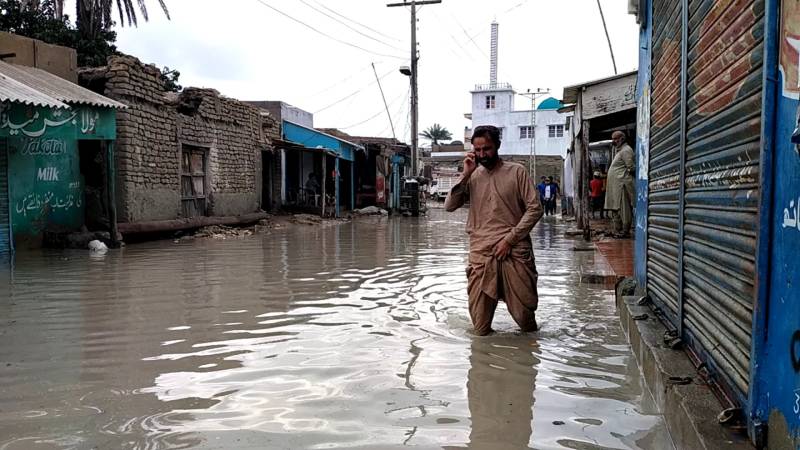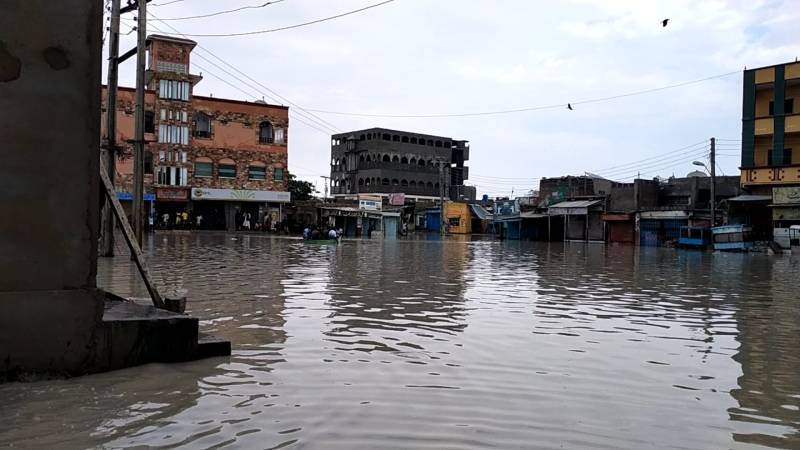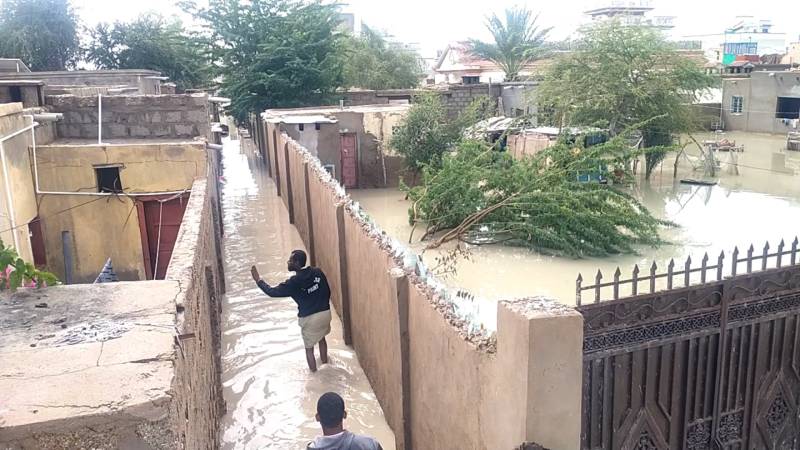
As rain clouds loom over Gwadar, the coastal city once again finds itself battling the aftermath of heavy, unseasonal downpours, with streets submerged and homes inundated.
The recent rains have left Gwadar with waterlogged roads and overflowing drains, exacerbating the challenges for its impoverished residents.
Gwadar's bustling business centre, Mulla Fazul Chowk, stands inundated, mirroring the plight of countless households across the city.

As residents deal with the deluge and the distress it has caused them, a pertinent question arises: Why does Gwadar suffer after every rainfall? Locals blame ongoing development projects, which have been spearheaded by the Gwadar Development Authority (GDA), such as the Gwadar Port, and the East Bay Expressway.
Maasi Zainab, a resident of the Mulla Band area and an active leader of the local Haq Do Thehreek (HDT), points fingers at these projects, claiming that they have altered the natural pathways that water used to take as it drained into the sea. Consequently, neighbourhoods such as Mulla Band now face flooding during rains. Her sentiments are echoed by many residents of Gwadar, who see the rapid development as a catalyst for disaster.
One of the primary culprits for Gwadar's flooding, locals say, is the construction of the Marine Drive located on the city's western side and the East Bay Expressway on the east side. While these infrastructure projects have enhanced connectivity and facilitated development, locals claim they have inadvertently disrupted the region's natural drainage patterns. By effectively blocking the traditional pathways for rainwater to flow into the sea, these roads have left the city vulnerable to flooding and have exacerbated the impact of rainfall.
Haji Mola Bakhsh, a shopkeeper, highlighted the inadequacies of the drainage system managed by the GDA, emphasising that even without rainfall, areas like Mulla Fazul Chowk remain inundated with sewage water.
However, GDA Chief Engineer Syed Muhammad Baloch defended the authority's efforts. Instead, he attributed the flooding in certain areas to obstructions and encroachments built by local shopkeepers on drains and for impeding GDA's work.

The situation has reached a critical juncture, with government officials struggling to provide relief. After the last heavy downpour, Gwadar Municipal Committee Chairman Sharif Miya Dad admitted the city's challenges and their capacity to deal with them. Dad cited a lack of adequate machinery and resources to tackle the crisis. District political representatives echo similar sentiments, citing budgetary constraints and limited resources.
In March this year, Baloch Yakjehti Committee's (BYC) Dr Mahrang Baloch termed flooding in Gwadar a man-made disaster, alleging that the government's agenda prioritises development projects over the well-being of Gwadar's residents.
As Gwadar grapples with recurrent flooding, locals have called for a holistic approach to development. Residents demanded improvement of basic infrastructure and government intervention to alleviate their plight. Until then, they said promises of Gwadar's development will remain elusive, overshadowed by the deluge of rainwater and the struggle for survival.

